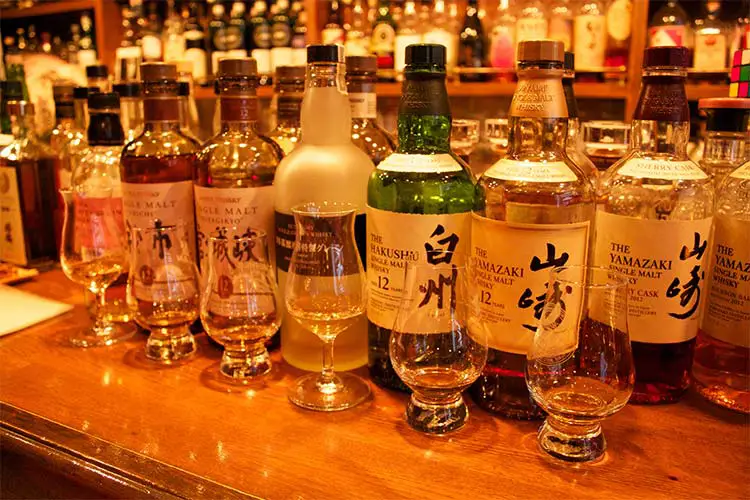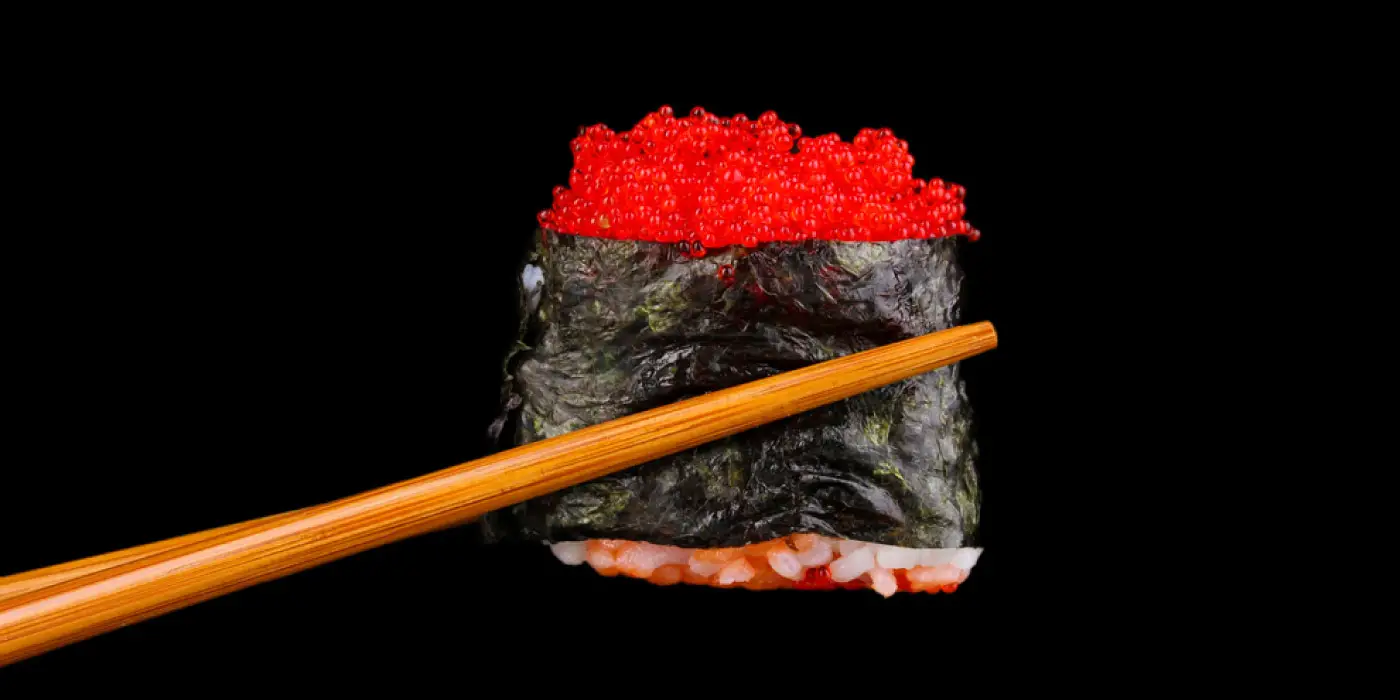Japanese Cuisine
Loved the world over, Japanese cuisine is one of the most popular types of food in many countries. Outside of Japan, it is famously known for its vibrant presentation and its luxurious and quirky ingredients. Lesser known though is the etiquette and philosophy that comes along with it; an important, cognitive approach that comes with eating in Japan that you likely won’t experience anywhere else in the world.
Everything about the eating experience in Japan is well thought out and presented in immaculate fashion, not least of which is the area in which you will eat. Traditionally the Japanese sit on the floor on top of woven straw mats called tatami; it is common to use a cushion when sitting for dinner and shoes must always be taken off before stepping on to the mats. Dishes are served on individual plates to preserve each flavour and it is commonplace to finish your food down to the last grain of rice! Do not start your meal until everyone has been served and pour other peoples drinks for them as opposed to your own.
Being an island nation, Japanese food is traditionally centred around fish and rice, and also includes noodles, tea and various alcoholic beverages including rice-wine and whisky. Modern-day Japanese cuisine has seen the introduction of a broader range of meats, the widely popular tempura and a collection of colourfully marketed sweets and snacks. The true Japanese experience evokes all five senses and leaves you feeling immensely satisfied in more ways than one.
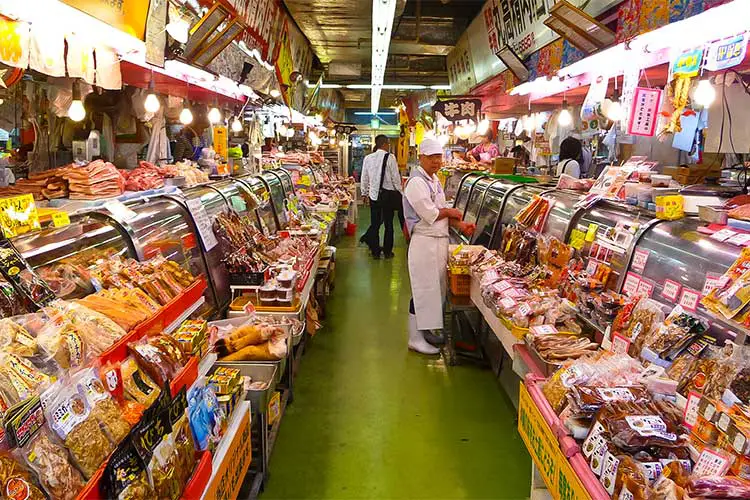
At the very heart of traditional Japanese cuisine lies rice and miso soup. Rice is served in a small bowl on the lefthand side of your place setting and miso on the right. Miso soup is made from a fish stock called Dashi, with ingredients including kelp and shiitake mushrooms, this is mixed with a fermented soybean paste and often includes tofu, seaweed and spring onion. The rice and soup are served with multiple side dishes called Okazu and emphasis is placed on fresh and seasonal ingredients, with each being celebrated as they come into season.
Rice and Noodles
Rice is a staple grain in Japan and is grown in terraces on the hillsides of rural areas. Although the rice is harvested brown it is mostly processed and consumed as white rice, which naturally cooks with a sticky texture, perfect for moulding into various shapes and eating with chopsticks. Rice is eaten with most meals including breakfast and is also used in the production of Sake, which we will come onto later.
There are two types of traditional Japanese noodles, Soba and Udon; Soba is a thin noodle made with buckwheat, whereas Udon is a much thicker and made from regular wheat, both of which are served in a broth with a variety of different ingredients, which will differ depending on what region you are in. Modern Japanese cuisine also features ramen, although these kinds of noodles came from China, they are never the less a popular addition.
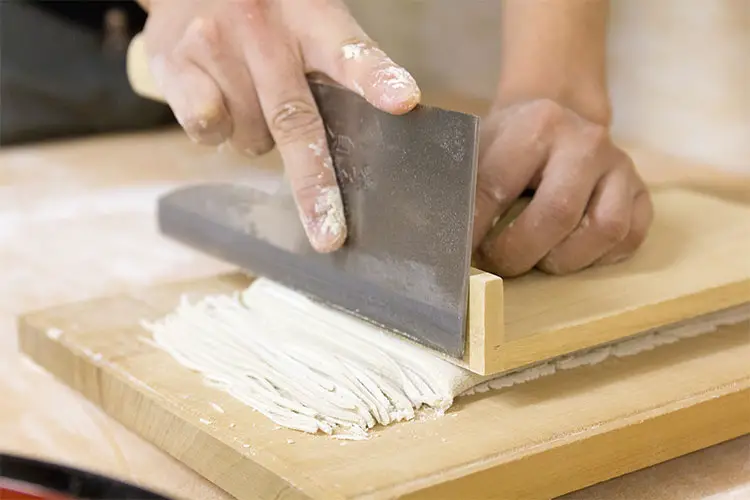
Fish and other meats
In ancient Japan red meat was not thought of highly and the diet of the Japanese was centred around fish. Although fish still makes up a large portion of the diet in Japan, during the Meji period in the late 19th and early 20th-century meat became much more prevalent and let to a greater variety of dishes as the modernization of Japan ran its course. Outside of Japan, raw fish known as Sashimi and Sushi is probably the most famous and regularly consumed part of Japanese cuisine, however, in Japan, this is somewhat of a delicacy and can be quite expensive if eaten on a regular basis. In addition to the aforementioned raw fish, the Japanese regularly consume stews, noodle bowls and fried dishes with a variety of fish and meat, depending on the season.
Becoming a sushi chef in Japan is a well-respected occupation and notoriously takes many years of training to become proficient. The preparation of raw fish is understandably complex when done correctly and chefs in Japan must study as an apprentice, first mastering the cooking of sushi rice before moving onto the preparation of the fish. Perhaps the height of a sushi chef’s career is becoming certified to prepare fugu; the pufferfish contains a potent neurotoxin called tetrodotoxin, which can easily kill a man if consumed. Chefs go through years of training and have regular appraisals to ensure their skill level is still up to par. Although death by fugu is exhibited in popular culture, in reality, this is very rare and usually only occurs in Japan when the fish is caught and prepared privately.
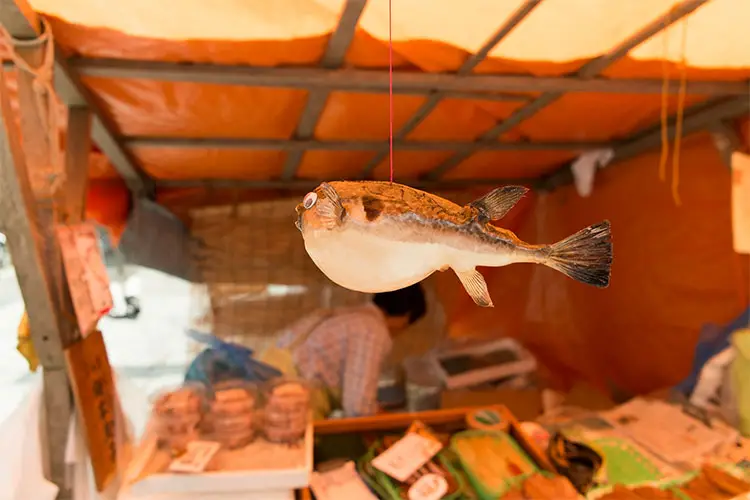
Deserts and Snacks
Popular deserts in Japan include ice cream, steamed dumplings and cakes and variations of sweetened rice. A red paste called Adzuki bean paste is often used in all kinds of Japanese sweets and is made by mixing adzuki beans with honey or sugar which was initially introduced to Japan from India. The introduction of sugar into Japanese culture lead to the creation of Wagashi, a style of Japanese confectionery which is served with tea and fruit.
Buying sweets in modern-day Japan is a visual experience in and of itself! Enclosed in colourful packaging, Japanese sweets include simplistic snacks suck as deep-fried sweet potato sticks and variations of popular western snacks with a Japanese twist, for example, the green tea KitKat. Various sodas, teas and coffee flavoured drinks also adorn the shelves of Japanese supermarkets and if you can’t read Japanese, this can be somewhat overwhelming! If you’re feeling adventurous, pick something off the shelf and give it a go; kind of like a blind date for your tastebuds!
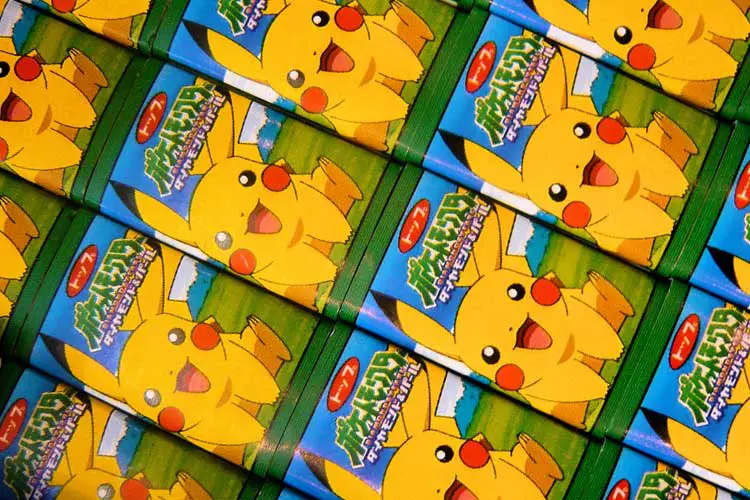
Alcoholic Beverages
If you’ve sampled an alcoholic beverage from Japan before, there is a good chance it was Saké. Using the same polished white rice used to make sushi, this popular beverage has a similar production process to bear and is usually left for around a year to mature. Similar in strength to western liquors, which are around 18-20%, saké is served both hot and cold and differs in flavour depending on the region it is made in. Beer is another popular Japanese drink, with brands such as Asahi and Sapporo widely available around the world. Most Japanese beers are classed as light lagers with a strength of around 5%.
Although it is not a traditional drink from Japan, Japanese whisky exploded onto the international stage around 15 years ago and has been doing well ever since. Introduced into Japan in the late 19th century, whisky here is said to be similar in style to Scottish whiskey and interestingly the pioneers of Japanese whiskey chose the northern island of Hokkaido for their production as it had a similar climate to where they had studied in Scotland. If you’re in Japan we highly recommend trying the whisky there and if you’re on the island of Hokkaido, be sure to visit the Yoichi distillery where Nikka whisky is brewed.
